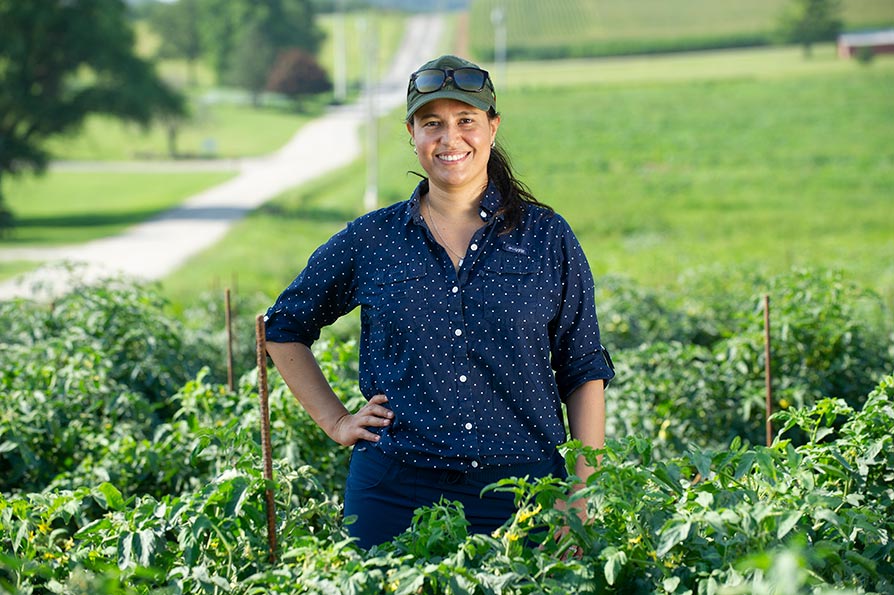10 Ways Technology Helps Protect Crops From Extreme Weather
Extreme weather preparedness is essential for today’s farmers. Extreme weather has required farmers to stay open to new possibilities for preparing crops and mitigating unwanted effects. Fortunately, technology offers plenty of ways to make it easier to protect crops from extreme weather events.
The following examples show why technology adoption is instrumental to being a successful agricultural professional as harsh conditions become more frequent.
1. Predictive Analytics
Although humans can’t predict the future with certainty, well-trained algorithms can process huge amounts of data better than the most conscientious and dedicated farmers. Then, those agricultural professionals can get predictions about extreme weather events to achieve the best possible outcomes according to what’s on the horizon.
In addition to providing early warnings of extreme weather, predictive analytics can suggest which crops would tolerate upcoming conditions. Some farmers also use this technology for pest control and irrigation guidance.
2. Vertical Farms
Vertical farms are indoor facilities where workers grow crops in layers. This arrangement enables larger outputs in smaller areas. It also prevents farmers from worrying about weather extremes.
One such farm operated by a San Francisco company has LED lights that mimic sunlight and encourage growth, along with robots to eliminate pesticide use. Since vertical farms need no soil and reduce water use, they promote responsible resource usage.
3. Precision Agriculture
Farmers pursuing precision agriculture make individualized decisions about planting, harvesting, irrigation, fertilization, and more. Such customized approaches help professionals quickly adapt to weather extremes and choose the most profitable, effective solutions.
People may also invest in precision farming while working with more sustainable methods, such as crop rotation and minimum tillage. Those changes can increase resilience and help agricultural professionals cope with inclement weather.
4. Weather Apps
Modern farmers can use a wide variety of apps in their operations. These resources assist with records management, property security, crop planning, and other necessities.
Apps can also be useful for predicting and dealing with extreme weather. Farmers in Bangladesh and Ghana use a forecasting application that provides at least a week’s warning of severe events. Then, users can make well-informed, targeted decisions.
5. Genetic Engineering
Some scientists have relied on genetic engineering to improve crops’ resistance to extreme weather conditions. Other potential benefits — such as better carbon sequestration — exist, too.
In one case, a research team learned a lipid molecule found in rice roots makes them tolerate floods and drought. They believe using genetic engineering to reinforce its production in rice crops would help them handle harsh weather.
6. Kaolin Crop Protection
Kaolin is a type of natural clay used in medicine and porcelain production. However, the agricultural industry also uses it for protection from the elements. Kaolin safeguards fruits and vegetables from the sun.
After people apply it to fruits or plant leaves, this product forms a barrier that minimizes sunburn and reduces stress while promoting growth. It can also prevent damage from insects, bacteria, and fungi.
7. Ethylene Pretreatment
Ethylene is a plant hormone that regulates growth, stress tolerance, and other essential processes. Scientists have also discovered it triggers a response that helps crops withstand the lack of oxygen during floods.
Lab experiments indicated ethylene halted root growth and caused cell-based energy production to switch to oxygen-free metabolic processes. The team believes ethylene pretreatment could increase plant survival when flooding occurs.
8. Solar Panels
As farmers experience less profitable crop yields due to extreme weather, some look at different land use options. One appealing possibility is to install solar panels. They allow people to sell unused energy back to the grid while supporting a cleaner energy future.
However, as farmers in France have discovered, solar panels can also protect crops from extreme weather. The infrastructure provides shade and limits hailstorm damage if strategically installed.
9. Drones
Many industrial leaders use drones to count warehouse-stored merchandise or provide aerial asset security. These vehicles assist in agriculture, too.
At an orange tree farm in Tunisia, camera and sensor-equipped drones provide actionable insights. They give data about soil health and hydration levels, preventing crop damage. Such technology stops farmers from overwatering, offering another notable benefit as more areas of the globe experience water stress.
10. Heat Mitigation Testing
Farmers have numerous ways to protect crops from extreme warmth, but which options will work best? Researchers at the University of Delaware have focused on finding the best solutions for lima beans. Delaware has more than 14,000 acres of these crops.
Some experiments involve running tests in greenhouses and fields, comparing the results and seeing how each plant responds to heat and what role its genetics plays in the reaction. Other efforts span to additional crops and include using a reusable cloth to limit how much light hits the plants and spraying a sunlight-reflecting particle film as protection.










